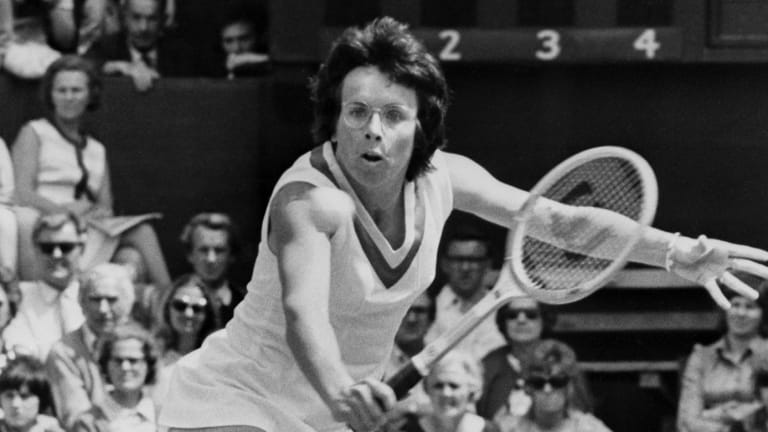By going for it, a future that Billie Jean King imagined came to life
By Sep 15, 2020Pop Culture
Billie Jean King named grand marshal for the 136th Rose Parade on New Year's Day
By Oct 07, 2024Pop Culture
Back to school with Billie Jean King: Trailblazer honored with statue at Cal State LA
By Oct 03, 2024Social
Overhaul the scoring? Have players wear numbers? Here's how Billie Jean King would change tennis
By Sep 21, 2024Pop Culture
Billie Jean King to be awarded historic Congressional Gold Medal
By Sep 18, 2024Social
Billie Jean King shares origins of 'favorite' famous quote, 'Pressure is a privilege'
By Jul 17, 2024Pop Culture
Billie Jean King is "trailblazing" in Jeopardy!, and also in the business world
By May 16, 2024Pop Culture
Billie Jean King gets the Breakfast of Champions treatment, set to appear on a Wheaties box
By May 02, 2024Social
Billie Jean King pays a visit to Sesame Street to celebrate International Women's Day
By Mar 09, 2024Social
WATCH: ATP players in Rotterdam dish on who they love most on tour for Valentine's Day
By Feb 14, 2024By going for it, a future that Billie Jean King imagined came to life
Her fellow Original 9 trailblazers agree that the vision and success in getting women's professional tennis off the ground wouldn’t have been possible without King's indispensable efforts.
Published Sep 15, 2020
Advertising

By going for it, a future that Billie Jean King imagined came to life
© AFP via Getty Images
Advertising

By going for it, a future that Billie Jean King imagined came to life
© Zhouzhiyong
Advertising

By going for it, a future that Billie Jean King imagined came to life